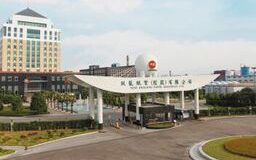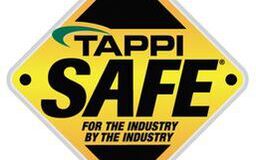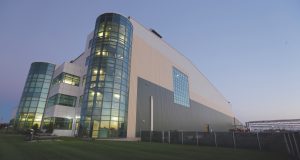Operational Data Helps Mills Meet Challenges
DATA SYSTEMS
MARIANA SANDIN
In a digital world, the paper industry has been forced to reinvent itself to remain relevant. However, that reinvention means mills must get more creative. That ingenuity is breathing hope into the industry: many mills are thriving because they’re optimizing operations to improve profit margins, or even reinventing uses for wood to meet new demands. With no precedent or subject matter experts to help them navigate these changes, they’re turning to insights from real-time operational data.
It’s more important than ever for mills to continue to produce a high-quality product as quickly and efficiently as possible. Equipment, energy, and mill operator proficiency all contribute to the bottom line, and there are multiple  potential points of failure in this complex network of machinery, employees, and equipment. Even small changes in equipment functionality can indicate that a catastrophic failure is imminent, or a slight tweak in a seemingly innocuous setting can increase energy use or result in a poor-quality product.
potential points of failure in this complex network of machinery, employees, and equipment. Even small changes in equipment functionality can indicate that a catastrophic failure is imminent, or a slight tweak in a seemingly innocuous setting can increase energy use or result in a poor-quality product.
We’ll look at the different approaches four mills have taken to using real-time data.
CONVERTING A MILL:
FORTRESS SPECIALTY CELLULOSE
For some mills, uncovering new business opportunities has proven to be more effective than optimizing existing production methods. Fortress Specialty Cellulose’s mill in Thurso, Quebec, opted to convert its equipment to produce dissolving pulp. Converting an entire mill is an expensive, labor-intensive process and, given the efforts, puts the mill at financial risk; yet, when done correctly, it can have long-term benefits.
 The original mill had closed in 2009, but was purchased by Fortress in 2010. In 2011, Fortress embarked on a complex and ambitious journey: Rather than remaining a standard kraft pulp production mill, Fortress opted to convert the mill to a dissolving pulp production facility. Dissolving pulp is manufactured in the mill and is then sent to textile customers where it is converted to rayon.
The original mill had closed in 2009, but was purchased by Fortress in 2010. In 2011, Fortress embarked on a complex and ambitious journey: Rather than remaining a standard kraft pulp production mill, Fortress opted to convert the mill to a dissolving pulp production facility. Dissolving pulp is manufactured in the mill and is then sent to textile customers where it is converted to rayon.
Producing pulp that can be successfully converted to rayon requires a different level of quality than the traditional paper approach. Paper grade quality is determined by strength and optical properties; in textiles, quality is measured by viscosity, purity, and reactivity. For dissolving pulp, it is imperative that the lignin and the cellulose be separated during the manufacturing process. Cellulose can be broken up relatively easily, but lignin is much more tough and fibrous, making it much more difficult to process. The goal at Fortress was to extract the lignin and send it to the recovery boilers so it could be burned for steam-based electricity.
To perform the necessary extractions to create high-quality dissolving pulp and generate the steam energy from lignin, Fortress installed a completely new cooking department in 2011 and cogeneration plant in 2012. It was here that  the Fortress team found themselves in uncharted terrain. Between new quality benchmarks, and an enormous investment in mill acquisition, new equipment, and retraining, the Fortress team was taking on a massive risk, and there were no other experts to call for help. Team members had to work through all challenges internally and the mill could not afford to fail.
the Fortress team found themselves in uncharted terrain. Between new quality benchmarks, and an enormous investment in mill acquisition, new equipment, and retraining, the Fortress team was taking on a massive risk, and there were no other experts to call for help. Team members had to work through all challenges internally and the mill could not afford to fail.
“The team was pretty adamant when we started that we needed a good data management system to support the success of our mill,” said Daniel Tremblay, information services superintendent at Fortress Specialty Cellulose.
Since 2002, Fortress Specialty Cellulose had used asset data from the OSIsoft PI System to monitor operations in its mills. Given their prior experience with the PI System, Fortress opted to use the same infrastructure to monitor all assets within the mill. In conjunction with this installation, Fortress personnel attended a three-day workshop called Asset-Based Jumpstart, which is an in-depth seminar designed to help PI System users identify strategic opportunities for their implementations.
After identifying and setting goals, the new influx of real-time data allowed mill employees to gain visibility into these processes and overcome many of the challenges associated with the changes.
Initially, Fortress experienced substantial water hammer issues that resulted in violent line shaking within the new cooking plant. The water hammer caused several line failures and resulted in safety hazards for mill operators. At times, these water hammer incidents would number as many as 100 per day. With the help of daily notifications from the PI System, Fortress could identify the equipment, digesters, and sequences that were at risk of a water hammer issue. From there, the mill installed instruments on the cooking line to detect vibrations and analyzed the velocity meter data in the PI System. Data was then correlated with the vibrations to identify the root cause so the problem could be fixed. Now, water hammer incidents have decreased by 97 percent and, at most, the mill experiences only one or two per day.
The conversion was a long and sometimes arduous process, but after putting the right guardrails on the plant conversion for problem-solving, the conversion was a success. Since the initial conversion, Fortress is using the PI System to monitor day-to-day activities through their five-step process for continuous plant improvement. By defining, measuring, analyzing, improving, and controlling all parts of the plant floor, the plant is thriving. “Today, we now produce more than 170,000 tons of dissolving pulp and generate 24 megawatts of electricity,” said Tremblay.
PRODUCTION OPTIMIZATION: EVERGREEN PACKAGING
Evergreen Packaging is a fiber-based food and beverage packaging manufacturer that operates multiple facilities around the world. Six years ago, Evergreen noticed that finished paper rolls were becoming lapped, or stuck, during the slitting and winding process, resulting in significant costs due to lost product. Evergreen embarked on a journey with OSIsoft to implement best practices around the PI System technology and extract the right insights to address the process issues causing the rolls to stick.
 Using PI ProcessBook and DataLink from OSIsoft, Evergreen collected machinery data within its Canton, NC, converting plant to understand both good and poor quality production run. The data analysis highlighted a variance between recipe set points and process running points.
Using PI ProcessBook and DataLink from OSIsoft, Evergreen collected machinery data within its Canton, NC, converting plant to understand both good and poor quality production run. The data analysis highlighted a variance between recipe set points and process running points.
Evergreen realized that operator knowledge of these set points was minimal, so the company set up a system that would show the set points against the running parameters. The mill retrained operators to understand that data and worked with them to identify optimal production points. Thanks to this newfound knowledge and system-generated alerts, mill operators can see when a winder is running above or below set points and make necessary adjustments, and the mill has seen a 60 percent reduction in off-quality product.
DECREASING VARIATION:
VERSO PAPER
For every paper mill, energy consumption and conservation are imperative to operate profitability. Due to paper grade changes, production rates, and time of year, Verso Paper’s Androscroggin mill in Jay, ME, experienced wide variances in water and energy pricing. With production at more than 2,000 tpd of freesheet and ground wood coated paper, even small energy pricing changes can result in hefty energy bills.
 By connecting the water and energy meters to the PI System, the OSIsoft team helped Verso identify data points and analyze information to gain an understanding of present and future consumption. The company reconfigured its water system to use water and energy when prices were optimal, resulting in a 20 percent reduction in cost. In addition, with the help of these insights, 80 percent of Verso’s mill energy requirements are now generated on-site using renewable resources.
By connecting the water and energy meters to the PI System, the OSIsoft team helped Verso identify data points and analyze information to gain an understanding of present and future consumption. The company reconfigured its water system to use water and energy when prices were optimal, resulting in a 20 percent reduction in cost. In addition, with the help of these insights, 80 percent of Verso’s mill energy requirements are now generated on-site using renewable resources.
ENERGY MANAGEMENT:
SAPPI FINE PAPER
Like Verso, Sappi Fine Paper’s integrated pulp and paper mill in Skowhegan, ME, was looking to shift primarily to renewable energy, but needed to understand when it should generate steam energy versus buying electrical energy. After implementing the PI System as the data infrastructure for sustainability, the team looked at the data in their PI System and saw the opportunity to generate additional steam power. Now, 80 percent of energy is coming from renewable sources. Not only does this keep costs and emissions low, the mill has won additional business thanks to its commitment to the environment.
CHALLENGES MET
Challenges from reduced demand, increasing energy costs, environmental concerns, and other pressures have painted a sometimes bleak picture for an entire industry. But, with the right data and information, mills are transforming operations to be more efficient, sustainable, and, in some cases, renewable. Some mills are embarking on entirely new business endeavors and finding lucrative alternatives to traditional paper manufacturing.
Regardless of a mill’s product, it’s clear that real-time operational data and insights are bolstering the industry and enabling mills to find profitability.
Mariana Sandin holds a degree in chemical engineering and is a pulp and paper industry account manager for OSIsoft. Reach her at msandlin@osisoft.com.
Fortress Specialty Cellulose’s mill in Thurso, Quebec.
Fortress was experiencing as many as 100 water hammer incidents per day; daily notifications helped reduce incidents by 97 percent.
The PI System helped Fortress reduce the number of mill shutdowns.
Overview of the winder at Evergreen Packaging.
Using the data system, Evergreen mill operators are trained to identify optimal production points and adjust the system accordingly; this has led to a 60 percent reduction in off-quality product.




